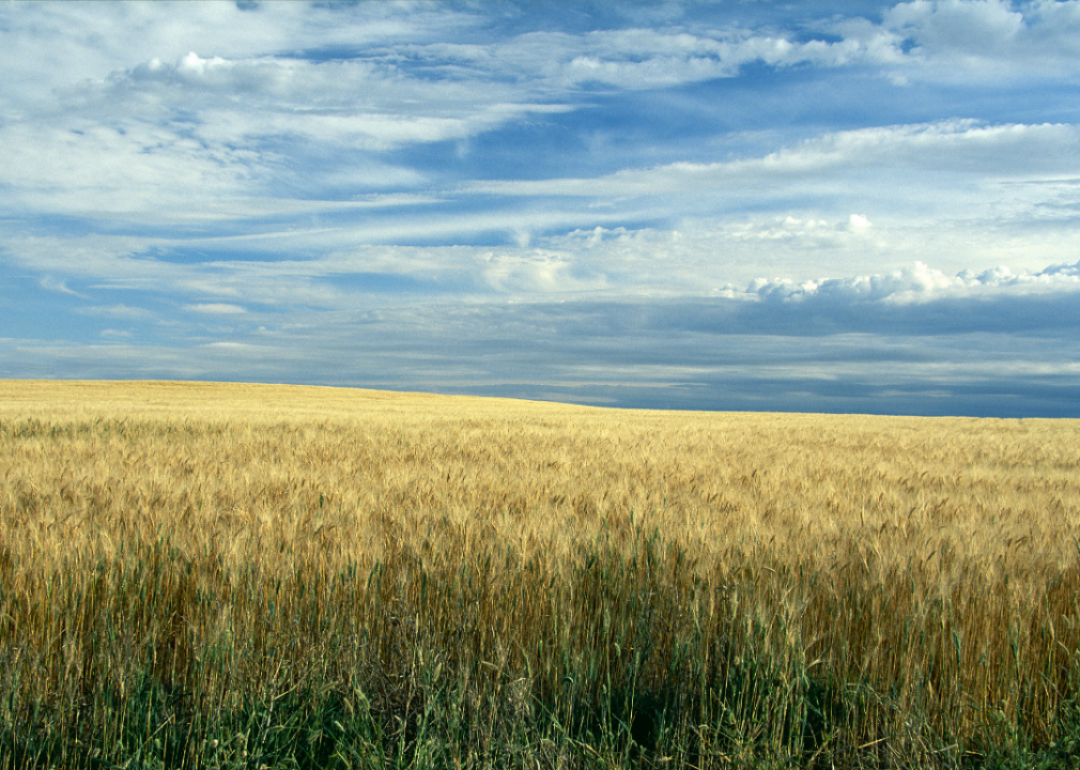
Counties with the most farmland in Minnesota
Farmland across the U.S. is disappearing by the millions of acres each decade by some estimates as sprawling urban development driven by rising housing costs pushes further into rural pastures.
The farmland that still exists in the U.S. is heavily dedicated to growing plants that Americans can't consume—grass. That grass, accounting for more than 300 million acres now, feeds our livestock, provides sod for new development, and serves as a cover crop to protect soil health between harvests.
Demand for major crops like corn and soybeans to feed Americans is only forecast by the USDA to grow in the coming decade, and demand for U.S. agricultural exports is expected to grow similarly.
The COVID-19 pandemic dramatically changed the way people purchased and consumed food, placing renewed attention on an increasingly consolidated agricultural industry where family farms have been swallowed up by large food corporations.
And after shifting behaviors caused massive economic swings in the U.S. and elsewhere, the Russian invasion of Ukraine forced food producers to once again account for yet another shock with so much of the world's grain capital taken offline by warfare.
War and corporate interests aside, farms have also had to reckon with a changing climate. Wheat fields were once commonplace across the country, but drought conditions of late have caused farmers to give up growing the crop entirely. Agitated by climate change, the shortage of water in parts of the country coupled with higher interest rates and the ongoing war in Ukraine are making agricultural businesses harder to run profitably.
To illustrate where American farms still persevere, Stacker compiled a list of counties with the most farmland in Minnesota using data from the Agriculture Department's Farm Service Agency. Farmers reported the data as mandated by participation in USDA income support programs, including Agriculture Risk Coverage and Price Loss Coverage as well as loan assistance. Counties are ranked by total acres of farmland.
In Minnesota, there are 21,268,924 acres of farmland, with yellow corn being the most common crop.
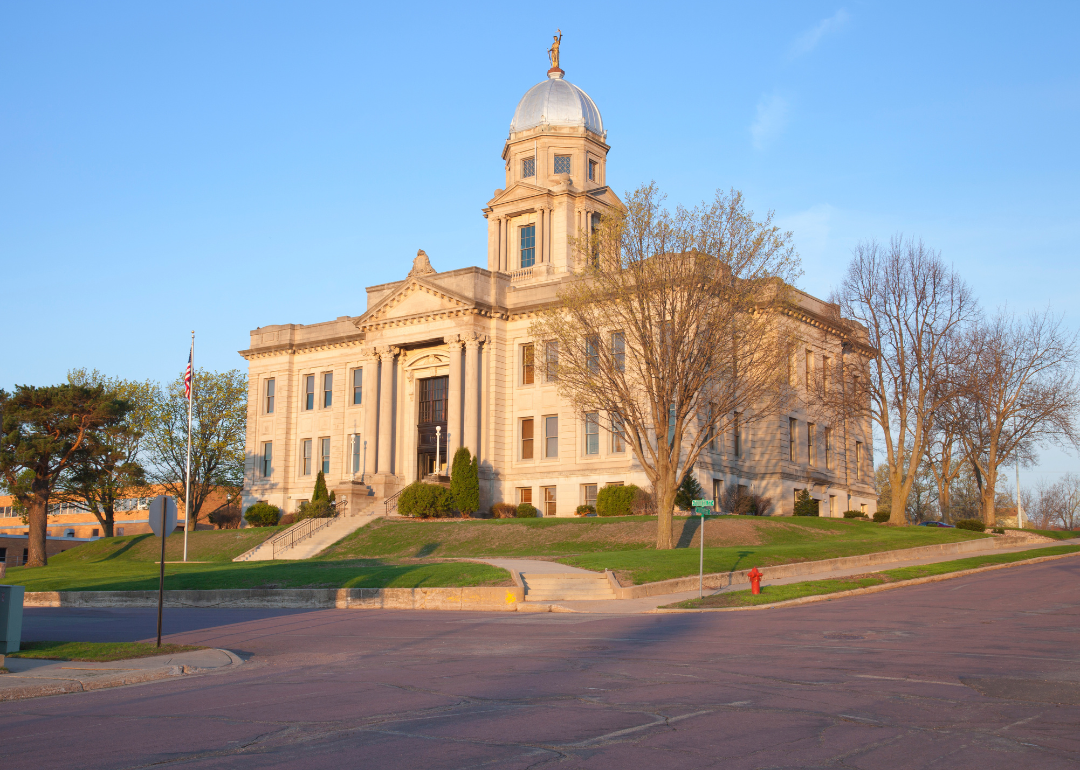
#25. Jackson
- Farmland: 347,617 acres (1.6% of state total)
- Farms: 1,982
- Most common crop: Yellow corn (163,821 acres, 47.1% of county farmland)
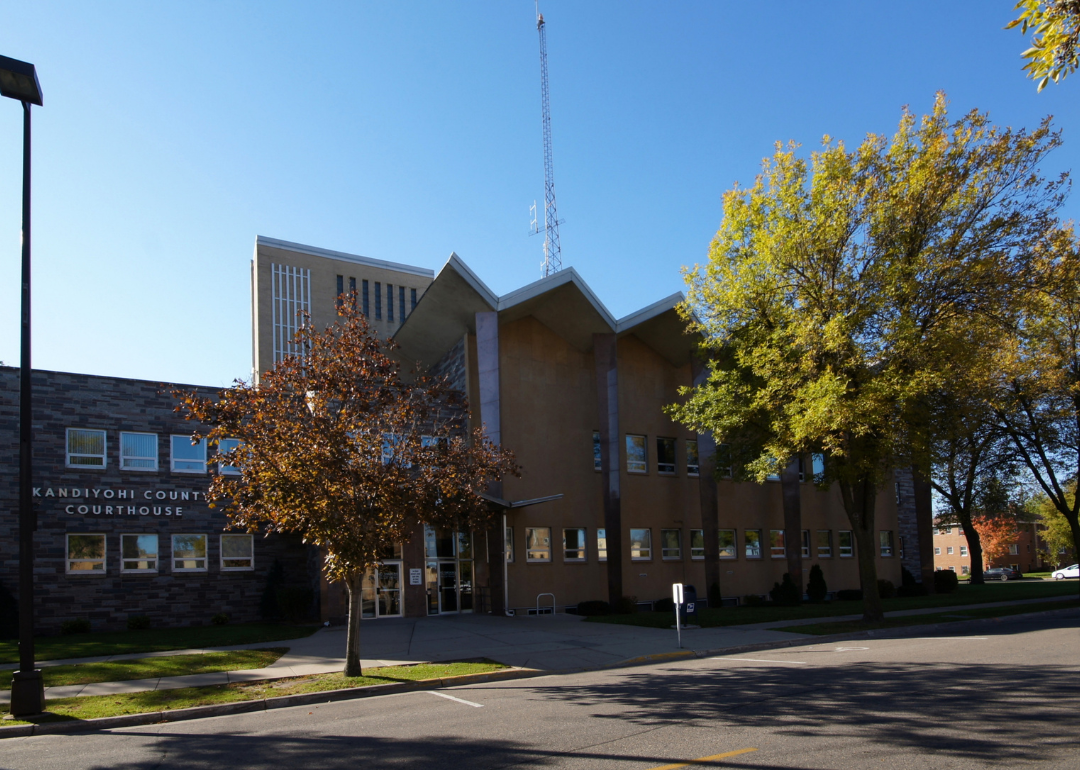
#24. Kandiyohi
- Farmland: 350,977 acres (1.7% of state total)
- Farms: 2,138
- Most common crop: Yellow corn (146,031 acres, 41.6% of county farmland)
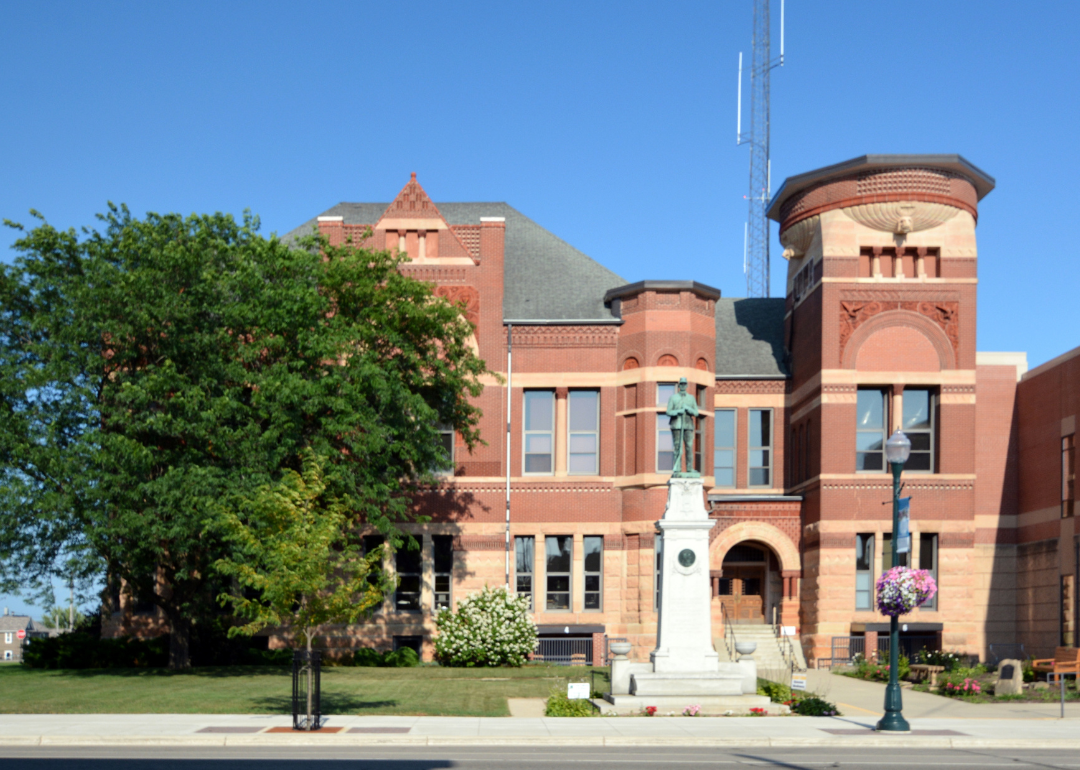
#23. Freeborn
- Farmland: 364,156 acres (1.7% of state total)
- Farms: 2,531
- Most common crop: Yellow corn (173,441 acres, 47.6% of county farmland)
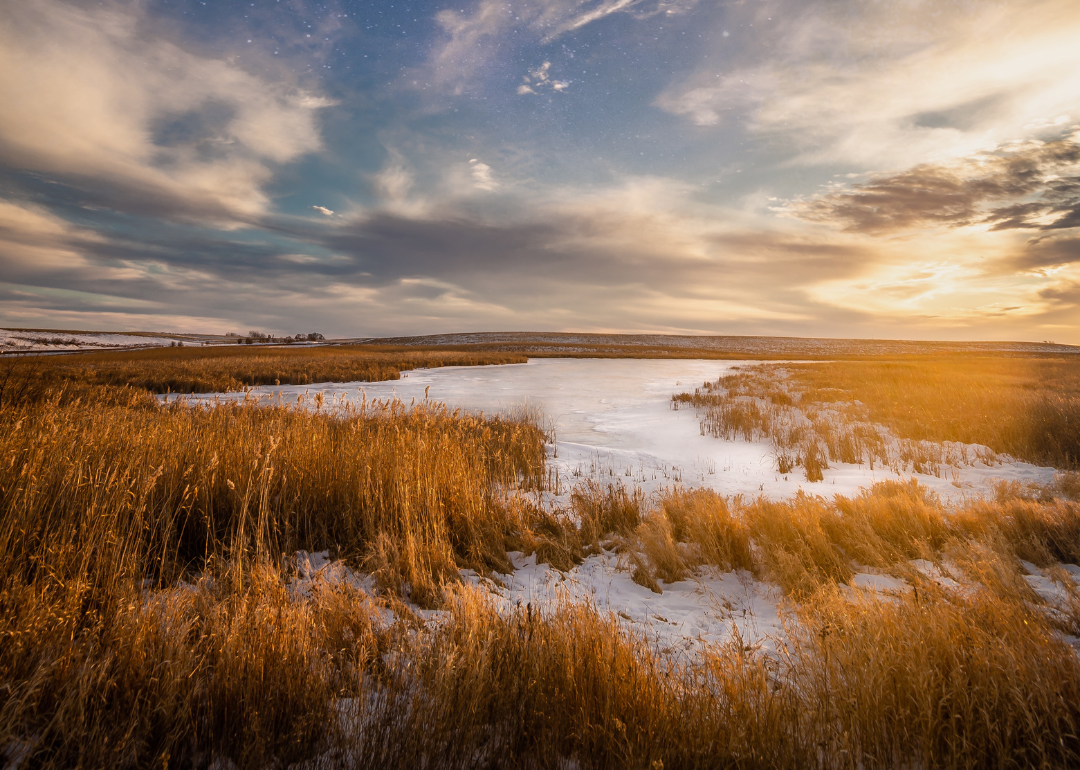
#22. Cottonwood
- Farmland: 369,422 acres (1.7% of state total)
- Farms: 1,819
- Most common crop: Yellow corn (178,724 acres, 48.4% of county farmland)

#21. Swift
- Farmland: 374,656 acres (1.8% of state total)
- Farms: 1,533
- Most common crop: Yellow corn (163,328 acres, 43.6% of county farmland)

#20. Fillmore
- Farmland: 375,188 acres (1.8% of state total)
- Farms: 2,532
- Most common crop: Yellow corn (157,316 acres, 41.9% of county farmland)
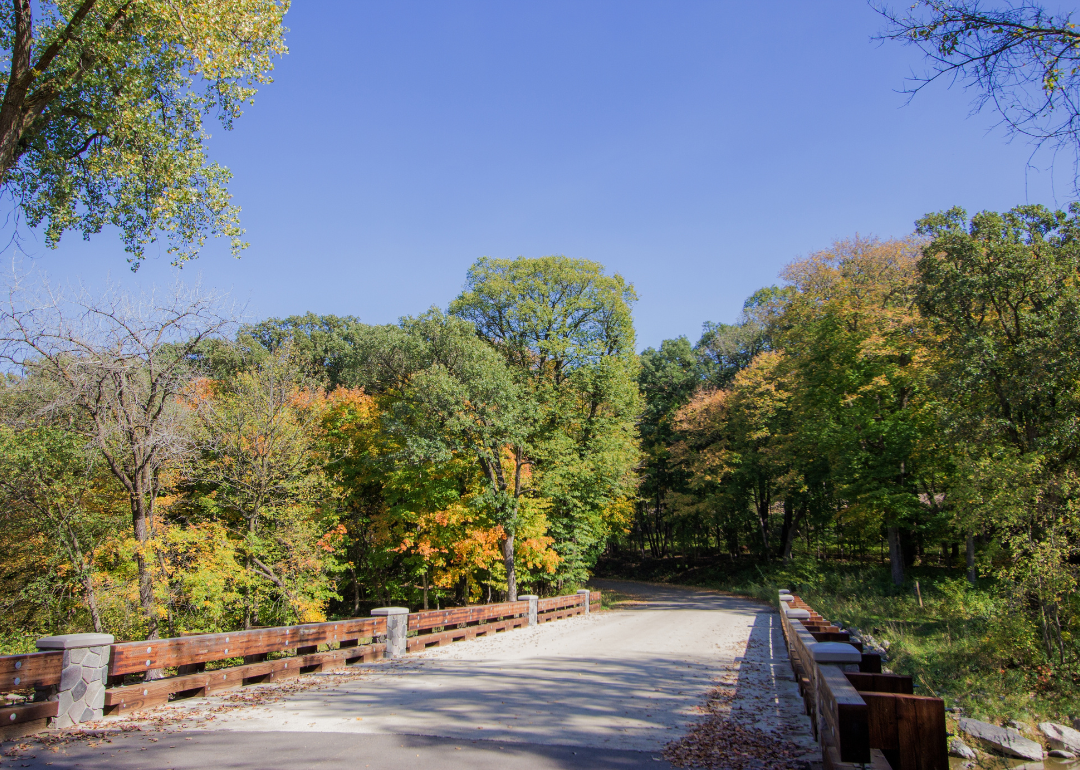
#19. Lyon
- Farmland: 376,926 acres (1.8% of state total)
- Farms: 1,897
- Most common crop: Yellow corn (177,393 acres, 47.1% of county farmland)

#18. Blue Earth
- Farmland: 377,686 acres (1.8% of state total)
- Farms: 2,507
- Most common crop: Yellow corn (186,034 acres, 49.3% of county farmland)
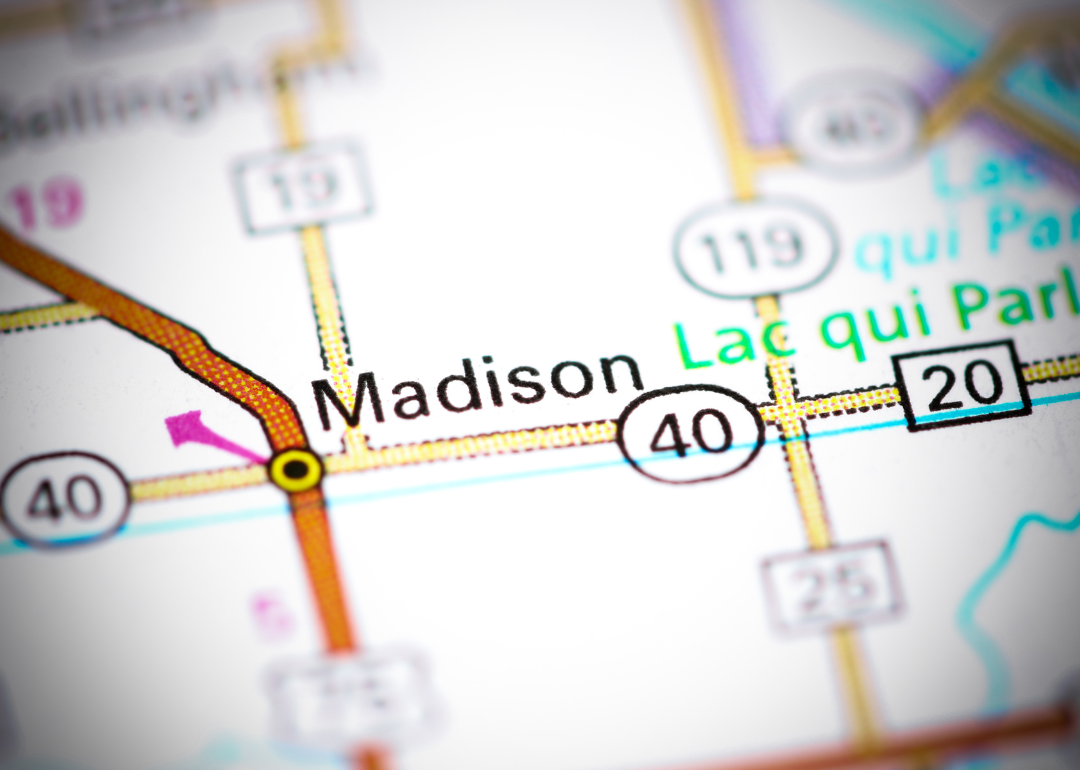
#17. Lac qui Parle
- Farmland: 383,635 acres (1.8% of state total)
- Farms: 2,174
- Most common crop: Common soybeans (165,414 acres, 43.1% of county farmland)

#16. Mower
- Farmland: 384,622 acres (1.8% of state total)
- Farms: 1,907
- Most common crop: Yellow corn (199,635 acres, 51.9% of county farmland)
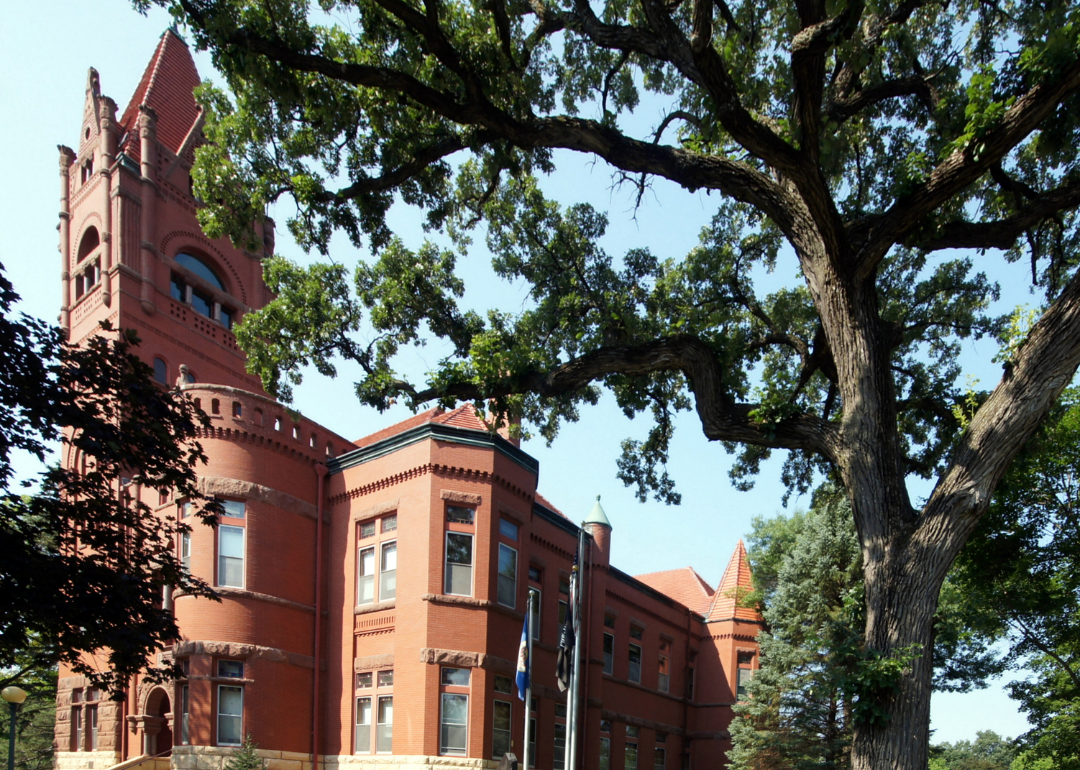
#15. Faribault
- Farmland: 389,996 acres (1.8% of state total)
- Farms: 2,138
- Most common crop: Yellow corn (193,062 acres, 49.5% of county farmland)
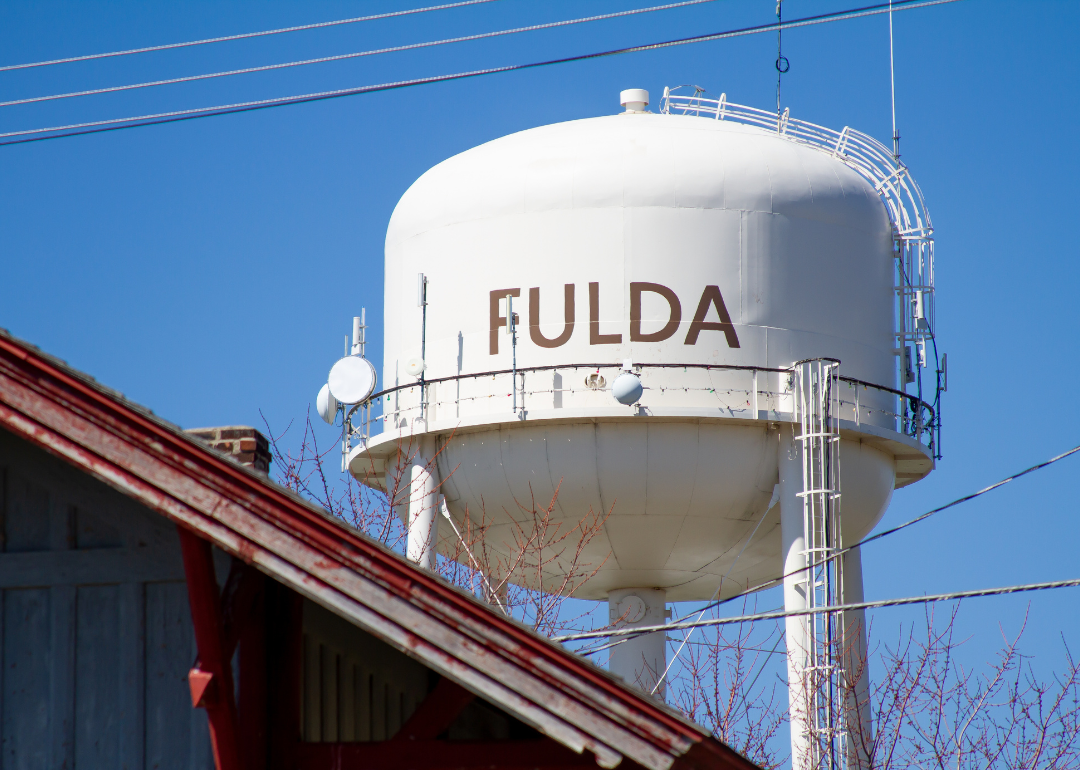
#14. Murray
- Farmland: 399,326 acres (1.9% of state total)
- Farms: 2,052
- Most common crop: Yellow corn (181,543 acres, 45.5% of county farmland)
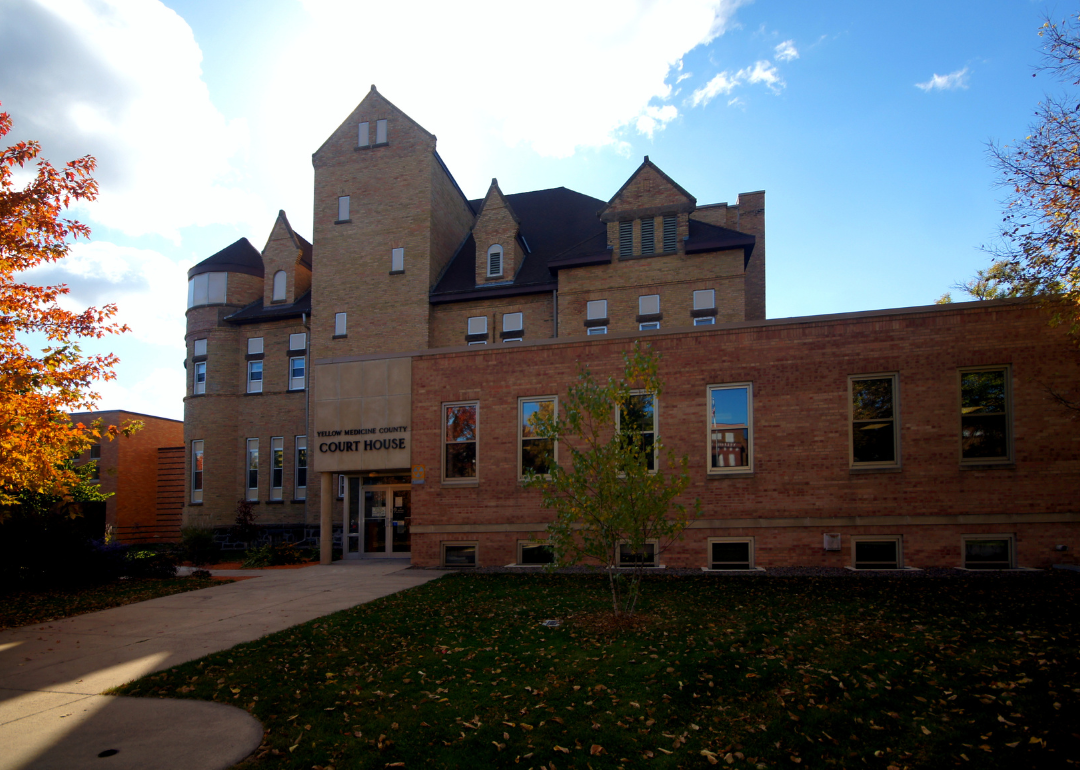
#13. Yellow Medicine
- Farmland: 404,138 acres (1.9% of state total)
- Farms: 2,115
- Most common crop: Yellow corn (183,711 acres, 45.5% of county farmland)
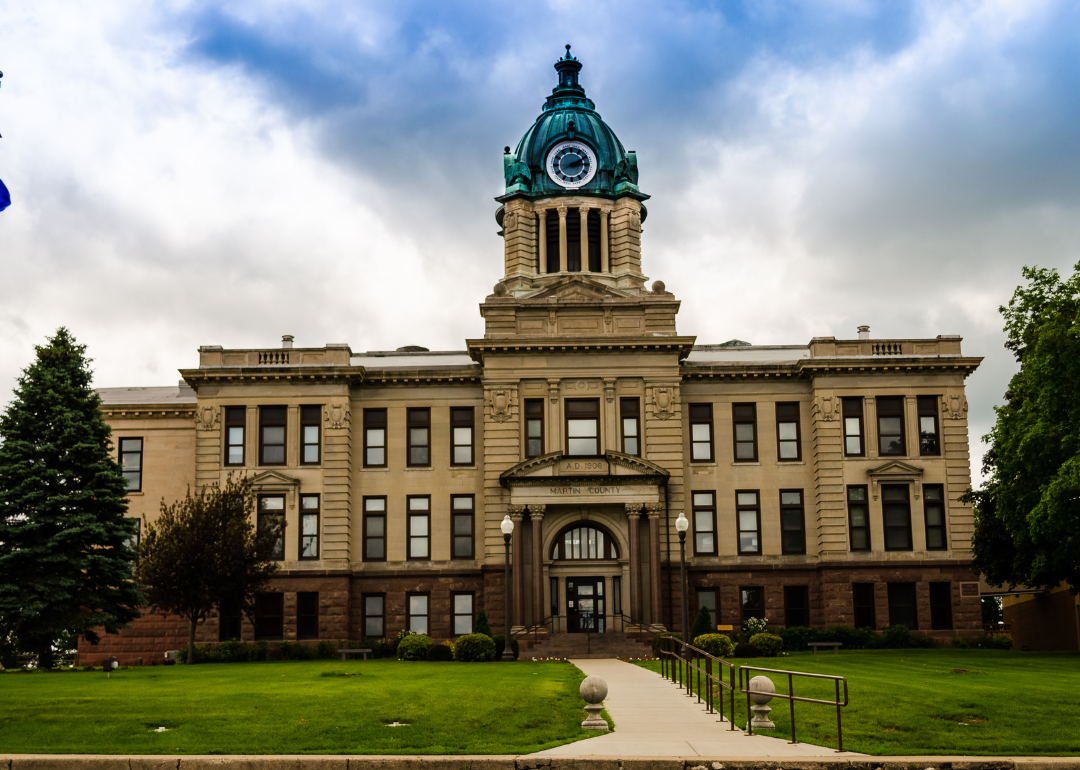
#12. Martin
- Farmland: 408,480 acres (1.9% of state total)
- Farms: 2,130
- Most common crop: Yellow corn (215,221 acres, 52.7% of county farmland)
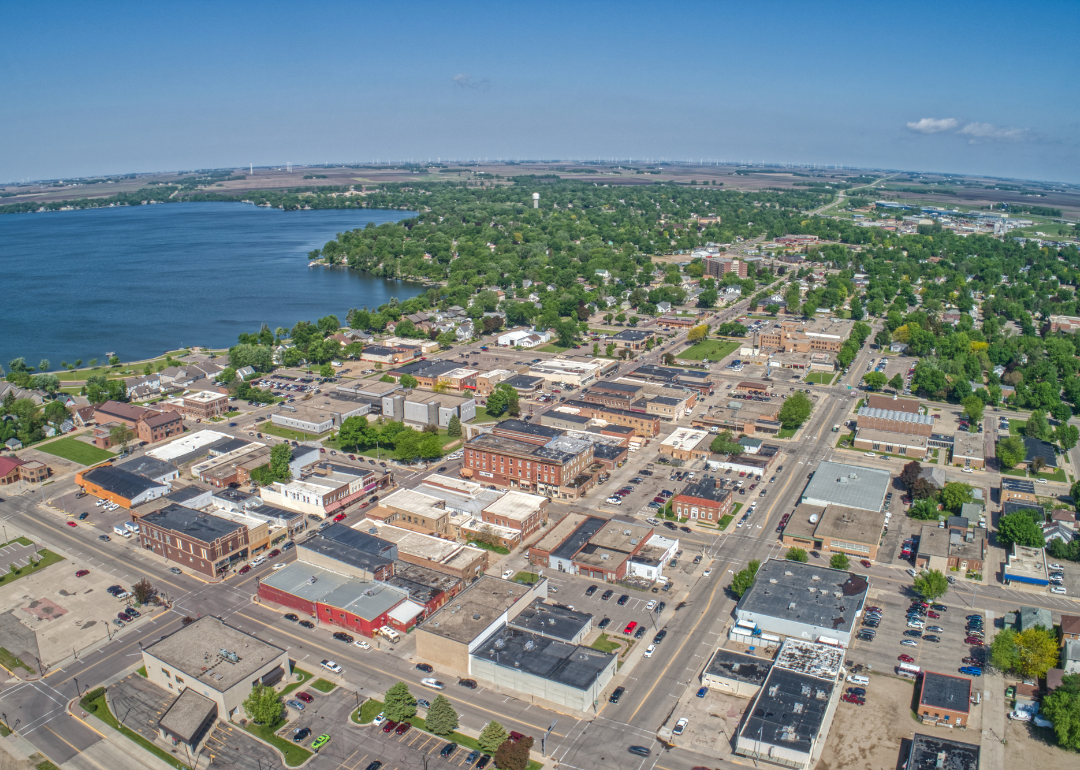
#11. Nobles
- Farmland: 415,795 acres (2.0% of state total)
- Farms: 2,184
- Most common crop: Yellow corn (209,566 acres, 50.4% of county farmland)
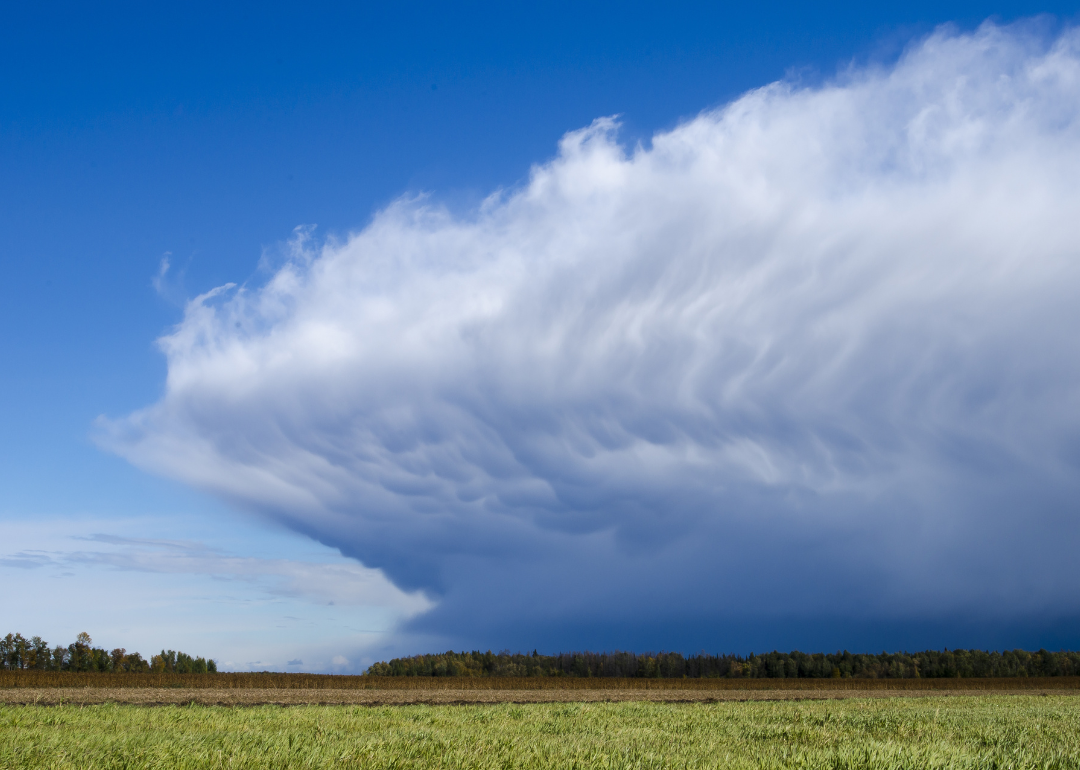
#10. Roseau
- Farmland: 442,076 acres (2.1% of state total)
- Farms: 2,292
- Most common crop: Common soybeans (128,112 acres, 29.0% of county farmland)
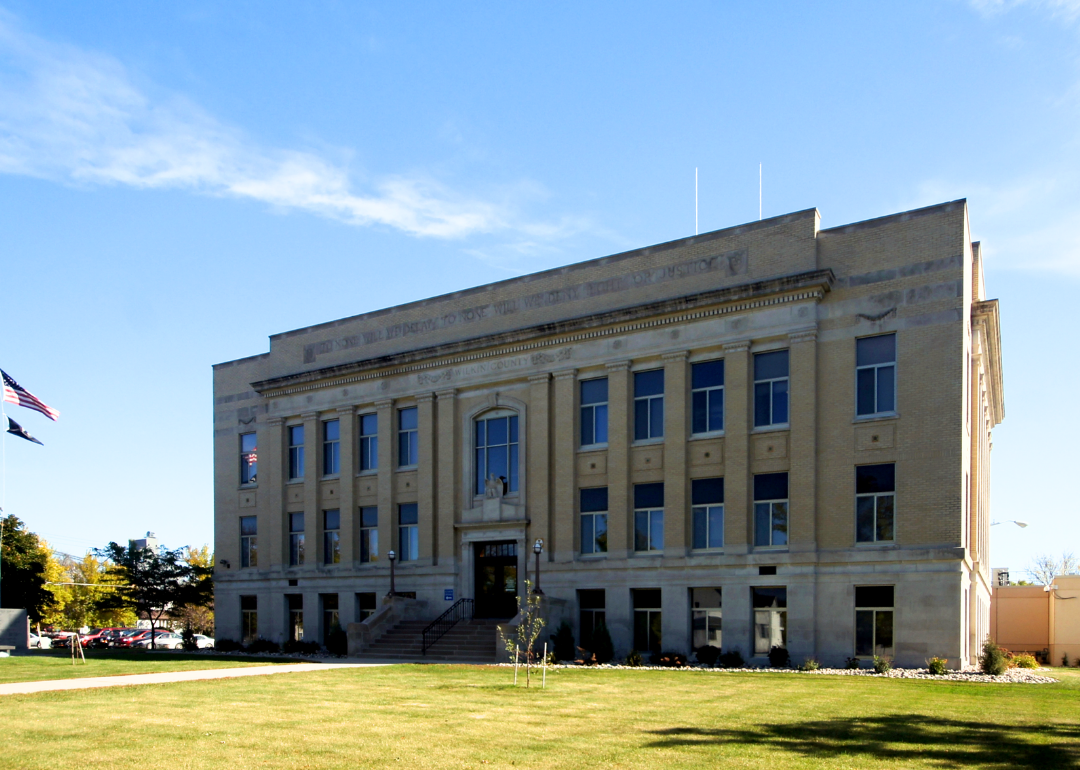
#9. Wilkin
- Farmland: 453,614 acres (2.1% of state total)
- Farms: 1,526
- Most common crop: Common soybeans (154,471 acres, 34.1% of county farmland)
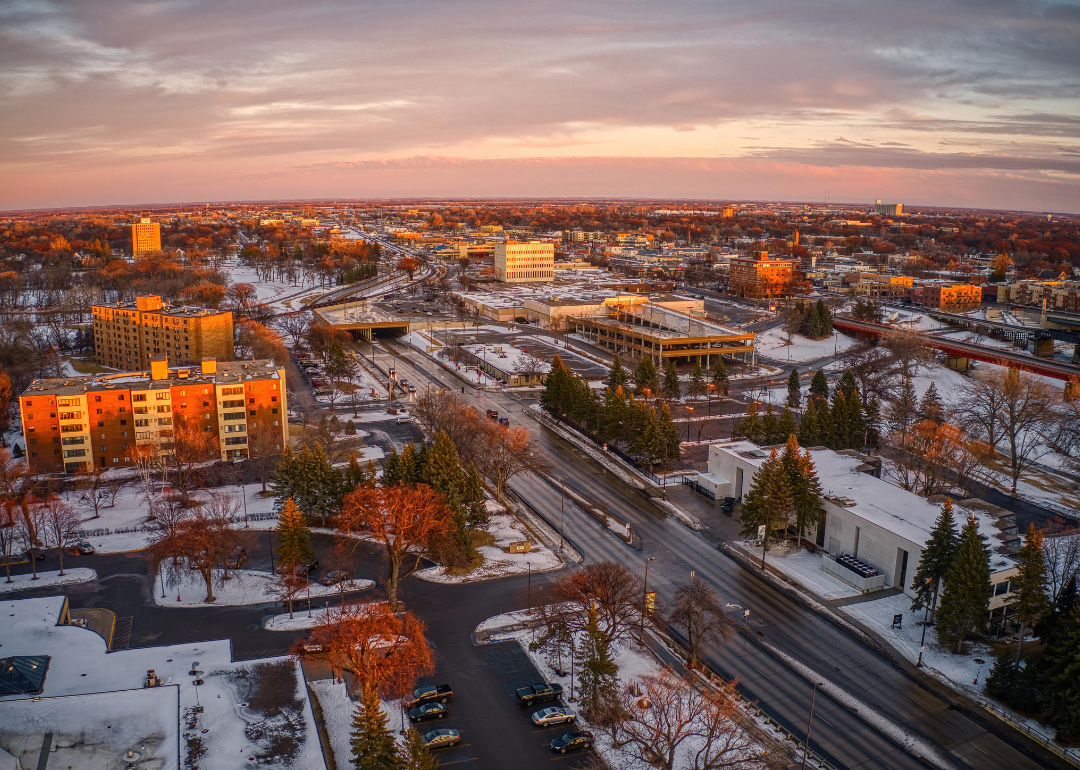
#8. Clay
- Farmland: 467,401 acres (2.2% of state total)
- Farms: 1,768
- Most common crop: Common soybeans (162,009 acres, 34.7% of county farmland)

#7. Redwood
- Farmland: 477,770 acres (2.2% of state total)
- Farms: 2,585
- Most common crop: Yellow corn (231,347 acres, 48.4% of county farmland)

#6. Kittson
- Farmland: 478,269 acres (2.2% of state total)
- Farms: 1,512
- Most common crop: Hard red spring wheat (129,142 acres, 27.0% of county farmland)
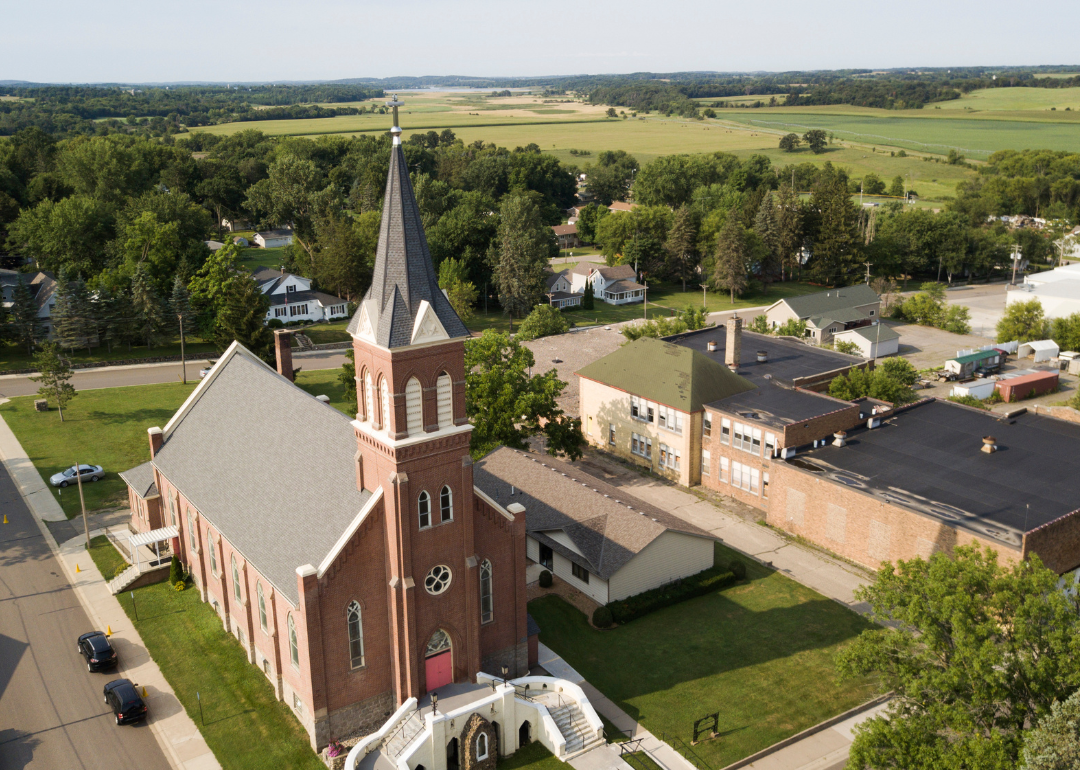
#5. Stearns
- Farmland: 484,658 acres (2.3% of state total)
- Farms: 4,021
- Most common crop: Yellow corn (171,931 acres, 35.5% of county farmland)

#4. Norman
- Farmland: 516,547 acres (2.4% of state total)
- Farms: 1,616
- Most common crop: Common soybeans (172,210 acres, 33.3% of county farmland)

#3. Renville
- Farmland: 627,268 acres (2.9% of state total)
- Farms: 2,096
- Most common crop: Yellow corn (277,963 acres, 44.3% of county farmland)

#2. Marshall
- Farmland: 639,243 acres (3.0% of state total)
- Farms: 2,572
- Most common crop: Common soybeans (205,147 acres, 32.1% of county farmland)
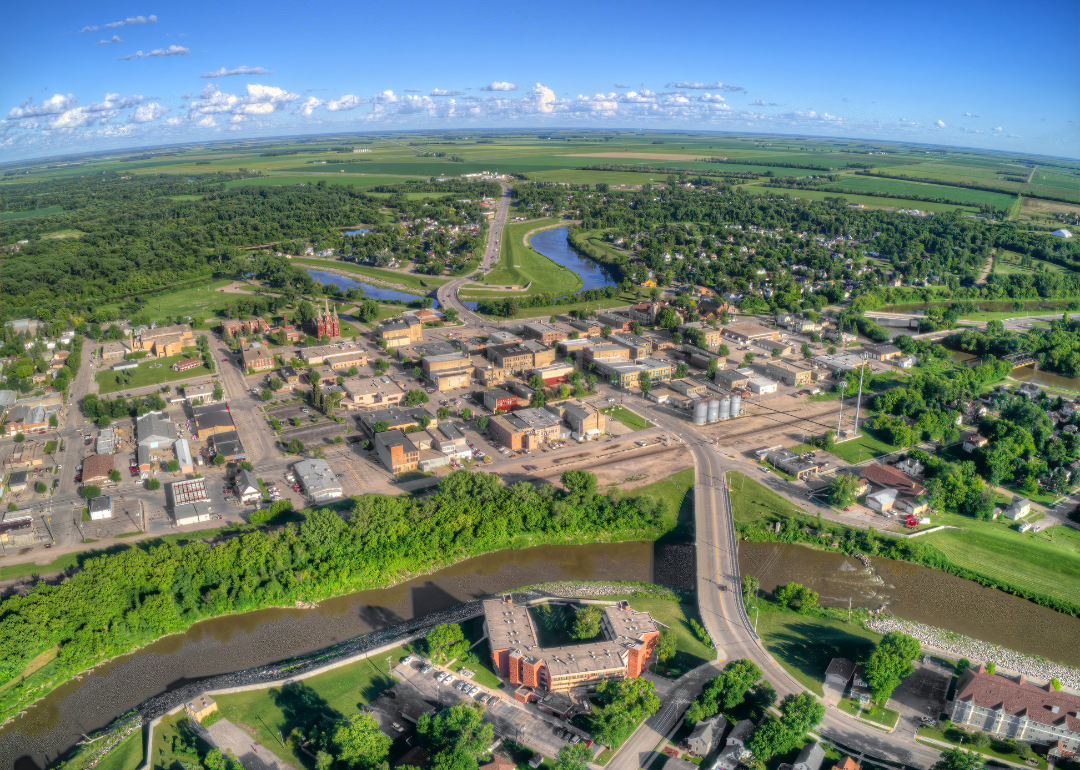
#1. West Polk
- Farmland: 733,512 acres (3.4% of state total)
- Farms: 1,672
- Most common crop: Hard red spring wheat (207,566 acres, 28.3% of county farmland)



